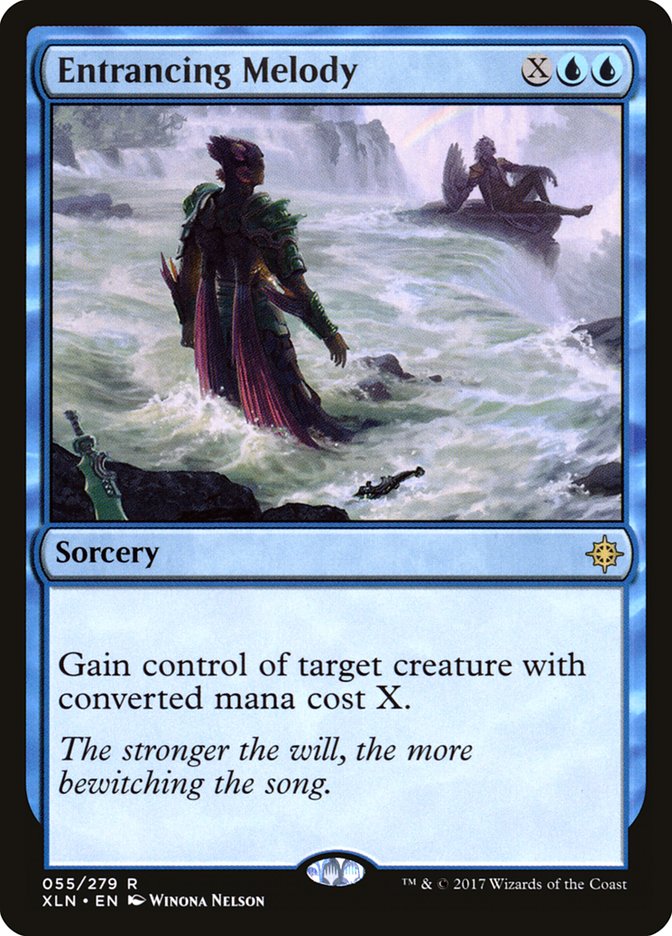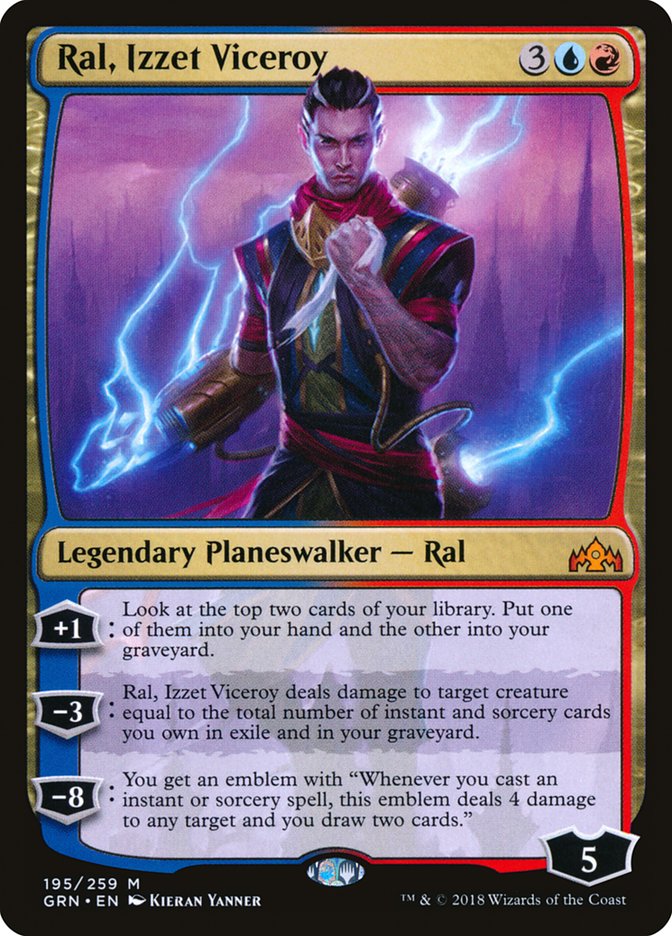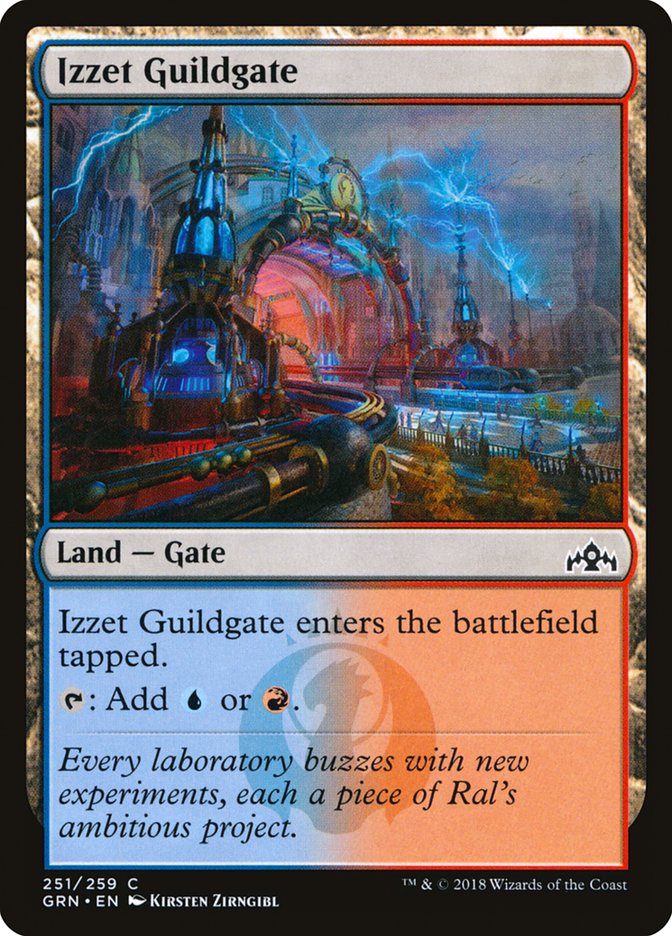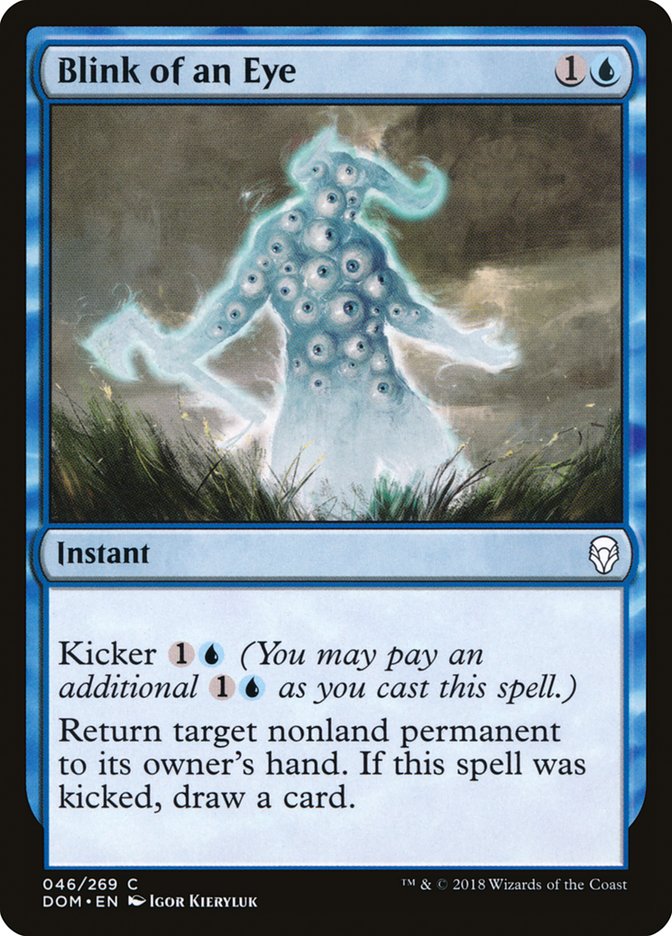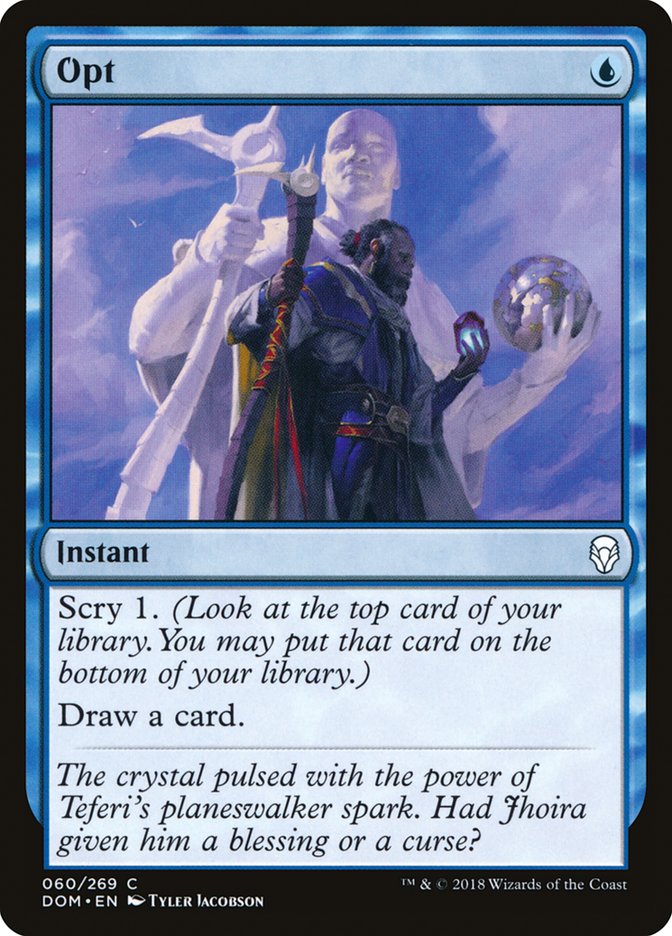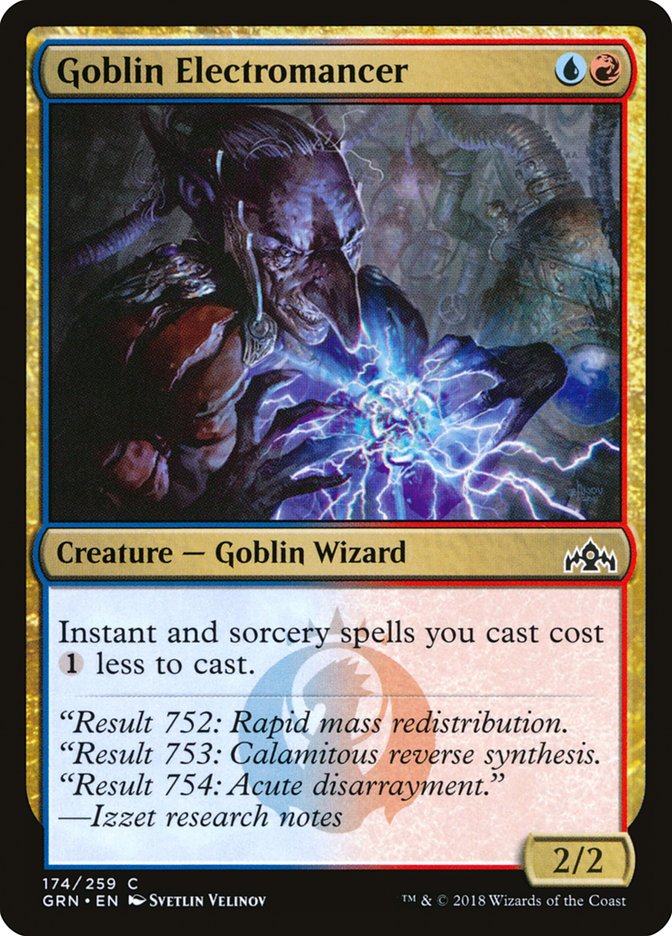This past weekend was Grand Prix Milwaukee, and from the moment I saw it on the schedule, I knew I had to go. It was being billed to people closest to me as a family vacation and the tournament was secondary, but I don’t know if that fooled anyone, because once I’m shuffling cards in a match, I’m as competitive as anybody out there.
I played Golgari (aka “Golgarbage”) at Pro Tour Guilds of Ravnica to a medium 5-5 record, and although I felt satisfied with my list and level of play in the games, I knew I didn’t want to grind out midrange matchups all weekend – I wanted to have fun. I wrote last week about my decision to play Izzet Drakes and I’m proud to have once again played the event “face-up,” getting eighth place with 73 of the 75 cards I published only days earlier.
Creatures (12)
Lands (8)
Spells (40)

The first change I made was to move a Beacon Bolt to the sideboard and an Entrancing Melody to the maindeck. I’ve been quite vocal about how the prevalence of card manipulation spells should cause you to play with more cards which have polarized values, and Entrancing Melody checks all the boxes. It can be the best card in your deck or the format for some situations, and when you dislike it, you can discard it to Radical Idea, Chart a Course, or Tormenting Voice on top of all the times you would see it but instead move it to a new zone with Discovery // Dispersal or Opt.
I won multiple games at GP Milwaukee with Entrancing Melody and moving forward I feel very confident about the first one in the maindeck. Additionally, unique card choices have added value once you factor in The Mirari Conjecture. In a normal decklist copied off the internet, this deck is incapable of the incredibly powerful effect Entrancing Melody provides, and with my build, you could take control of up to three creatures with your one Melody in a single game! Casting it early, returning it with The Mirari Conjecture, and waiting for chapter three to copy it is really getting the most bang for your buck.
The Mirari Conjecture is one of the more unusual card choices, but it was extremely strong for me. One of the more problematic matchups for this deck is Dimir Control, a deck that uses Disinformation Campaign to repeatably keep your hand in check and limit the number of Arclight Phoenixes that enter the battlefield. The Mirari Conjecture is outstanding here, since “enchantment” is such a difficult card type for Dimir to interact with.
I was on the fence about which was better between The Mirari Conjecture and Ral, Izzet Viceroy, but in the end, I preferred The Mirari Conjecture maindeck and Ral in the sideboard, since I felt there would be far more copies of Vraska’s Contempt in the metagame than Thrashing Brontodon, Vivien Reid, or Assassin’s Trophy, and I would get some matchups which had zero cards that could stop it at all.
I hadn’t played a single game with Ral, Izzet Viceroy, but in my testing for Pro Tour Guilds of Ravnica, Ultimate Guard Pro Team collaborated with KMC Genesis and Brian Braun-Duin was outspoken about how amazing Ral was out of the sideboard of any Izzet deck. I also saw Yuuya Watanabe with two in his sideboard at the PT on Brian’s recommendation, and with Yuuya’s seal of approval, it was locked in – one copy of The Mirari Conjecture in the maindeck to have fun and one copy of Ral, Izzet Viceroy in the sideboard to try to win. This was a fairly organic swap, since the 10-0 list I started from had one copy of The Mirari Conjecture maindeck and one copy in the sideboard, so I had the same number of five-mana bombs but a better mix. Ral was also attractive because I anticipated a rise in the popularity of Niv-Mizzet, Parun and I wanted to have something to punish them with if they tapped out on Turn 6.
The next change I made was to cut Izzet Guildgate for an Island and it was a fairly easy one. Decks like this are at their best when firing on all cylinders and being highly mana-efficient. I can understand but not condone the use of Izzet Guildgate, as it helps ensure you have a proper balance of both red and blue mana and gives you the best chance possible to cast Crackling Drake on Turn 4, but at the end of the day you have to pay a mana for the privilege of color fixing, and I’m not the type of guy who gives up free mana that easily.
In a contest between extra blue and extra red mana, it was easy to choose blue. If I’m going to be stuck on one color of mana for the early turns of the game, blue is better because I can use Opt, Chart a Course, and Discovery // Dispersal to dig through my deck to find my secondary color. Additionally, this is a blue-based deck and Goblin Electromancer demands as much blue mana as possible. If you have Turn 2 Goblin Electromancer, your best third turns all involve multiples of Chart a Course and Radical Idea. In fact, Radical Idea in and of itself is a double blue spell, since you want to cast it and jump-start it quickly to produce two spells of the three required for Arclight Phoenix, and jump-start allows you to discard a Phoenix you’ve drawn.
Moving forward I would not play Blink of an Eye. It was cute and cool and I did some nice things with it, but it was almost always the first card I sideboarded out and once contributed to a loss by being an awkward card in hand. I had my head in the clouds, dreaming of using The Mirari Conjecture repeatedly with Blink of an Eye, but the reality is you essentially always win the game once you get to Chapter III of The Mirari Conjecture and Blink of an Eye would be unnecessary. I had some good experiences bouncing Knight tokens from History of Benalia to get a little value or bouncing Ixalan’s Binding as an opportune moment to get a hasty Crackling Drake seemingly out of nowhere, but on balance it was worse than whatever my next best card should happen to be.
Depending on the metagame you expect, here are a few options I’m considering as a one-of in that final slot:
Spell Pierce has been on my mind a lot lately because basically every deck in the metagame has a high-value target: History of Benalia; Karn, Scion of Urza; Experimental Frenzy; Vivien Reid; Vraska’s Contempt; Teferi, Hero of Dominaria. I’ve had dreams of playing a mirror match where I pass Turn 1 holding an Opt and I get to tag a Tormenting Voice for the full two-for-one. That said, I’m nervous about the prospect of putting a reactive card in my deck when so much of the core strategy is being mana efficient and spending as many cards as possible quickly to get the strongest Crackling Drakes the most often.
One of the reasons Jeskai Control has been able to succeed lately against Izzet Drakes is a complete lack of counterspells in Game 1, and if a single counterspell were to show up at any point in the first five turns of the game, I believe Izzet Drakes would be a huge favorite. The Jeskai Control players play in a way that’s highly exploitable, slamming Teferi, Hero of Dominaria on Turn 5 and turning the game around almost immediately, not to mention I always want to be prepared for those big turns based around Settle the Wreckage. It’s also reassuring that all the best Standard decks in the history of Magic have played Spell Pierce in the maindeck. (Remember CawBlade?)
The takeaway for me at the end of an amazing weekend of play with Izzet Drakes is that the deck is totally absurd and clearly Tier 1, if not the best deck in the format.
Standard has changed and grown into a very diverse metagame. With the power level of the average rare or mythic as high as it is, it’s easy to pick up any deck, have a favorable run of games, and decide it’s one of the stronger decks in the format. Each deck can do something really powerful with some amount of consistency and that leads to wonderful interplay in the games. I think Izzet Drakes is the best because its best hand is way better than the next best possible hand, and it’s helped out with both Opt and Goblin Electromancer.
Opt really isn’t that different from Preordain, and if you give a player like me four copies of Opt, I feel like I can mitigate the amount of nonfunctional hands and ensure I draw my important cards or sideboard all-stars more often. When your deck has a low land count and sixteen cheap card filtering spells, it’s almost like you’re playing a 40- to 50-card deck, and with clever deckbuilding, it’s not out of the question to have access to the important cards you desire more often. One of the reasons I was drawn to Golgari was all the explore creatures working as cheap cantrips or aggressive cards with scry, but Izzet Drakes takes this concept to a whole new level.
My first day home after the GP, I fired up Arena and I got the best draw I’ve ever had playing the deck. This reminds me to repeat my Public Service Announcement from last week – don’t play this deck without four copies Goblin Electromancer. There previously was some discussion and uncertainty about which was superior between the Goblin Electromancer version and builds with Crash Through and Warlord’s Fury, but it’s obvious now the Electromancer version is superior and games are won and lost based on if you have it Turn 2.
Round 6 of the GP, I played against Matt Johnson, who had a strong finish at the PT and I believe worked with PT winner Andrew Elenbogen for that event. He sideboarded in Baffling End against me solely to stop Goblin Electromancer. Think about that – he sideboarded in a reactive card with only one target in my entire deck. This is direct evidence that in a contest between Izzet Drakes and Boros Aggro, the Boros Aggro players live in fear, and they’re deathly afraid of Goblin Electromancer. It always feels good to sit down with zero games of practice and know you’re the favorite.
A Pro Player’s Guide to Winning with Izzet Drakes: pic.twitter.com/G2BLENQvXx
— Owen Turtenwald (@OwenTweetenwald) November 20, 2018
How could you see this hand and not immediately want to play this deck? Plus, I got to use all my favorite old version of the cards: Invasion Opt, Stronghold Shock, Guildpact Steam Vents, and Return to Ravnica Goblin Electromancers.
The only thing better than winning? Winning in style.


